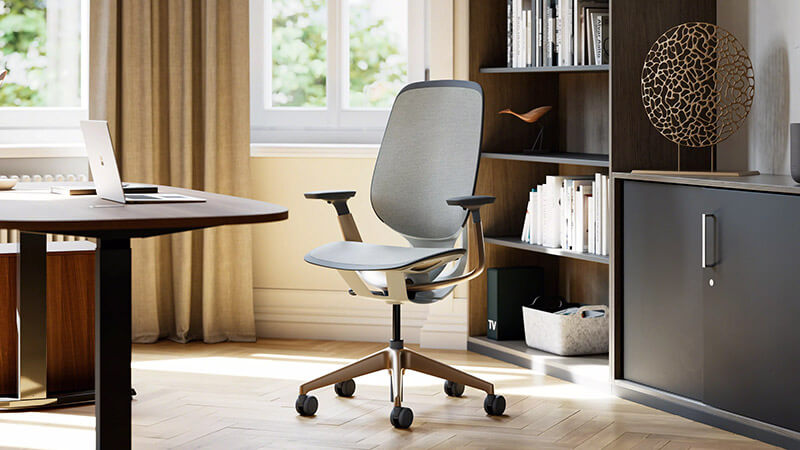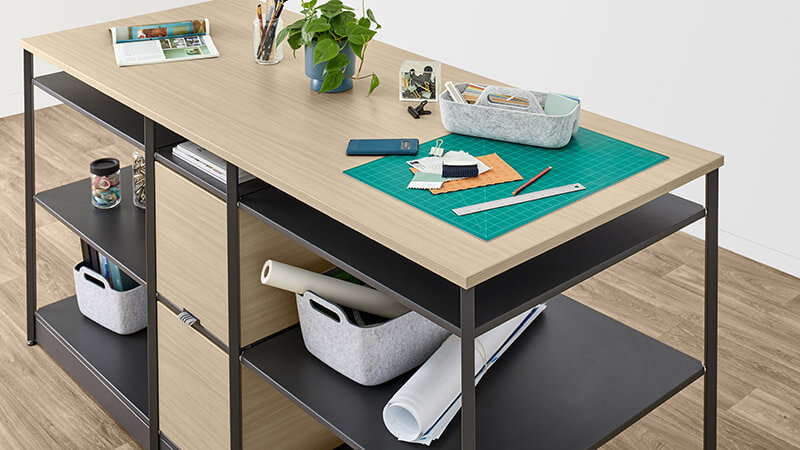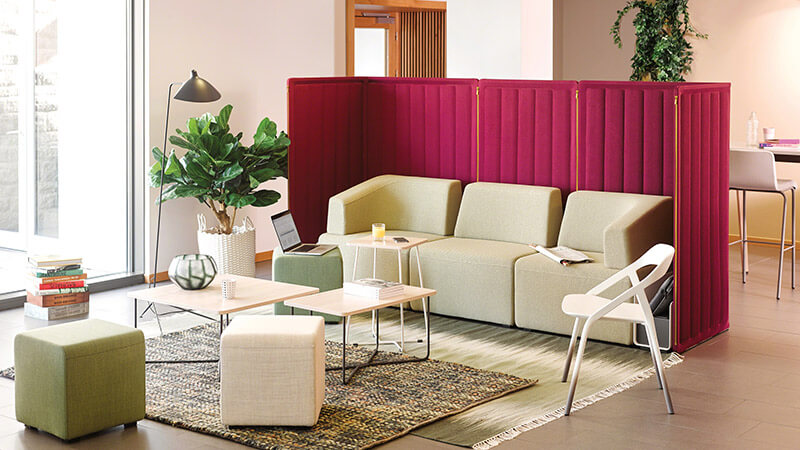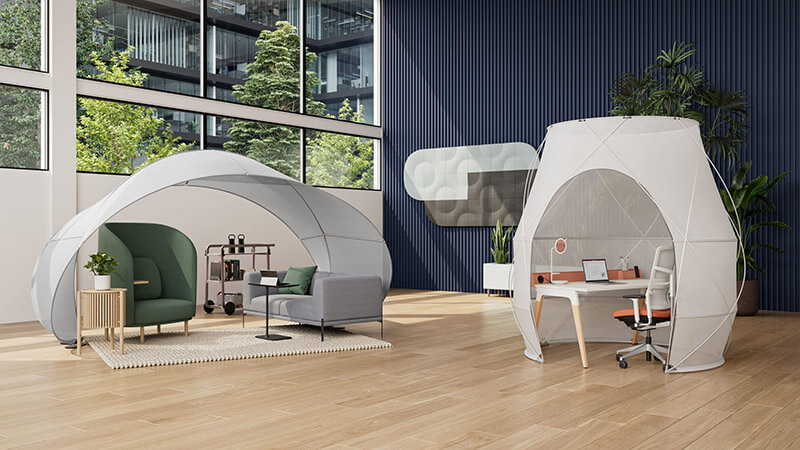A recent Steelcase survey has revealed that what business leaders prioritise when thinking about the workplace has drastically changed. These priorities are discussed and explored in “Designing Better Futures”, the Autumn 2023 edition of the Steelcase magazine Work Better.
Steelcase aims to inspire new ways of thinking about product and space design, and they share ideas for designing spaces that are inclusive and celebrate those who are designing better futures for people and the planet.
New sets of priorities for business leaders
Steelcase’s research looked into what issues business leaders would consider important in the next year, with 81% saying that employee wellbeing was a priority. Two other high priority considerations are sustainability and the need for diversity, equality and inclusion in the workplace.
Wellbeing is likely to be a priority for many leaders as employees are still not in the office as often as business leaders expect, so making the office a welcoming place is vital. A majority of business leaders are clearly prioritising people and the planet, so designers and manufacturers need to take this into account when developing ideas.
Designing with wellbeing as a priority
Following on from the research, Designing Better Futures offers several examples of how designers and architects are placing wellbeing at the heart of their methodologies.
The first features designer Bobby Berk (from the Netflix TV show Queer Eye) who wanted to turn his entire Los Angeles home into his company’s headquarters. He was determined that the offices would still feel like a home.
“We’re on a mission to help everyone discover that good design is good for the mind. We want to design spaces that make you feel good when you’re there.”
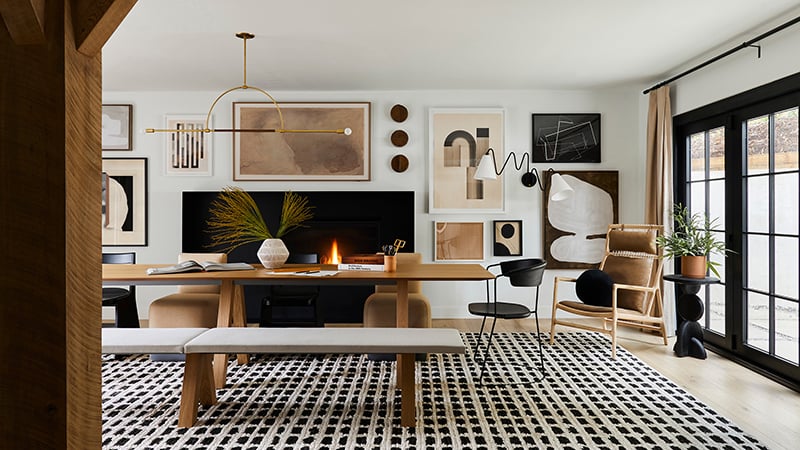 Photo credit: Sara Ligorria Tramp / Tramp Studio
Photo credit: Sara Ligorria Tramp / Tramp Studio
Sustainability driving design choices
Despite the challenge, Steelcase is adding responsibility to its list of innovation criteria when developing new products. This adds a further factor to the drive for sustainable products.
“Responsibility is our moral and ethical obligation to society, to think about the environment in everything we create, consume or use; we are constantly evolving how we develop products because there are hidden costs to us as a society behind every innovation.”
Sustainability as a design consideration has a long history at Steelcase, having been introduced as a design factor as long ago as 1912. Steelcase's Chief Revenue Officer Allan Smith explains:
“Our experience is that doing good for the planet is also good for business, which is why we’re sharing what we’re learning with our suppliers, partners and other stakeholders.”
Adding responsibility to the mix affects the design process in several ways:
Reducing the carbon footprint
One of the simplest and most fundamental ways of reducing your carbon footprint is to use the least amount of materials. An innovation in materials science in 2018 led to the Steelcase SILQ chair, which responds to movement without mechanisms. And more recently, Steelcase designers have used what they learned from SILQ to create Karman, a chair which weighs just 13kg.
Choosing and using materials responsibly
Exploring new materials, such as recycled products or sustainable natural organic materials, is all part of this sustainable approach. For example, a new type of plastic has been developed by BASF – made from a diverted waste stream generated during electronics production, and Steelcase has created the Flex Perch Stool using this material. It performs like virgin plastics, is 100% recyclable and keeps electronic waste out of landfills.
By experimenting, Steelcase finds new ways of creating, such as utilising sustainably sourced woods and naturally derived fabrics, which then contribute to a more regenerative approach to making products.
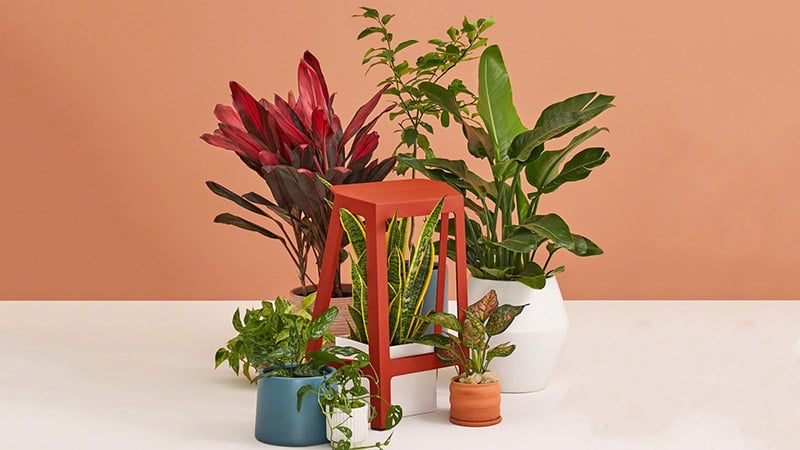
Designing for circularity
Circularity is considering all parts of a product’s lifecycle — including how much energy is used to build it, how it’s shipped and what happens at the end of use. A significant barrier to recycling is disassembly, so Steelcase focuses on producing products that are easy to disassemble with simple tools or even no tools at all.
“Some products are theoretically recyclable, but effectively they aren’t. So we focus on designing for easy disassembly, which makes it easier to repair or refurbish and extend the use of the product, and to get it into the proper recycling stream if necessary.”
In Europe, designers and engineers figured out how to create Divisio Acoustic Screens with zippers instead of glue. Made with recyclable PET infill and hand-sewn fabric, Divisio is easy to disassemble and, therefore, more likely to be recycled.
Not just a theory
Thinking about sustainability is great, but can you produce functional, good-looking and durable products whilst adhering to sustainable principles? Steelcase offers a broad range of sustainable options, so designers have more choices across product categories.
Amongst the products featured in the issue that showcase Steelcase’s sustainable design principles of reducing carbon, designing for circularity, and choosing and using materials responsibly are:
Think
A stylish chair incorporating recycled materials that can be dismantled in five minutes for recycling.
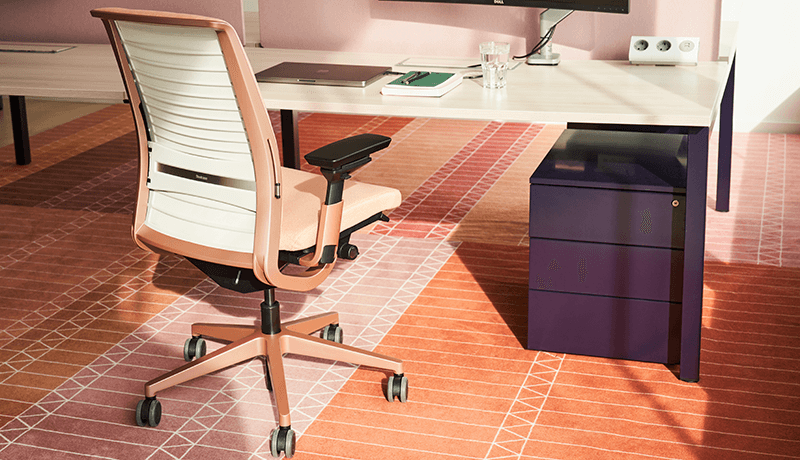
Flex Active Frames
The modular nature of Flex Active Frames means it can be reused in different configurations – extending the likelihood of the system. And when it finally reaches the end of its life, it is easily disassembled for recycling.
B-Free Cube
Made from locally supplied wood from PEFC-controlled sources.
Work Tents
These innovative work structures are easily disassembled and refreshed by simply changing the fabric. In addition, they reduce transport emissions through compact packaging and efficient stacking.
Recycling to the front
Only a fraction of the 92 million tons of textile waste produced each year worldwide is reused or recycled. The remainder finds its way to landfills or incinerators. As early as 2011, Steelcase has started using fabrics made from recycled materials. Going further, Steelcase wanted to eliminate textile waste through a textile-to-textile recycling program.
And now they are working with their textile supplier, Gabriel, to create a fabric – Loop – made from yarn that uses recycled textile waste mixed with recycled polyester from plastic bottles. Despite this, Loop is a stylish and classic fabric that is available in a range of colours. Loop will be incorporated into products from Steelcase’s Sarrebourg manufacturing facility in France, which produces chairs for Europe, the Middle East and Africa.
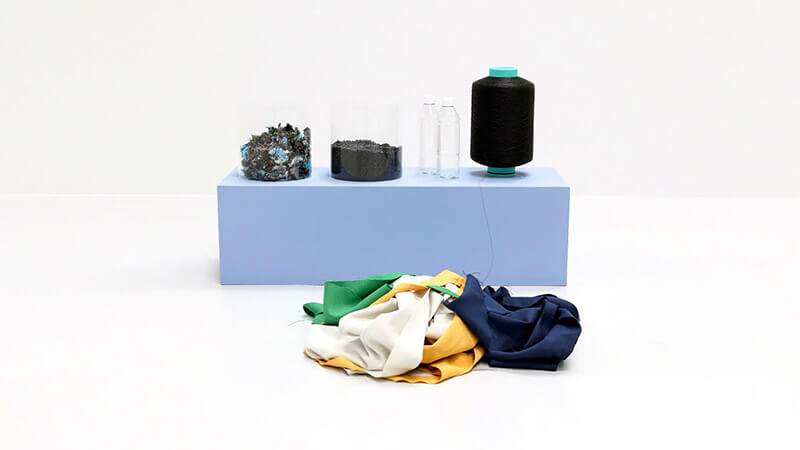
Summary
With business leaders focused on wellbeing, sustainability and inclusion, new and existing workplaces must adapt and develop to meet these priorities. Designing Better Futures highlights these issues but also shows what can be done, with practical and inspiring examples throughout.




